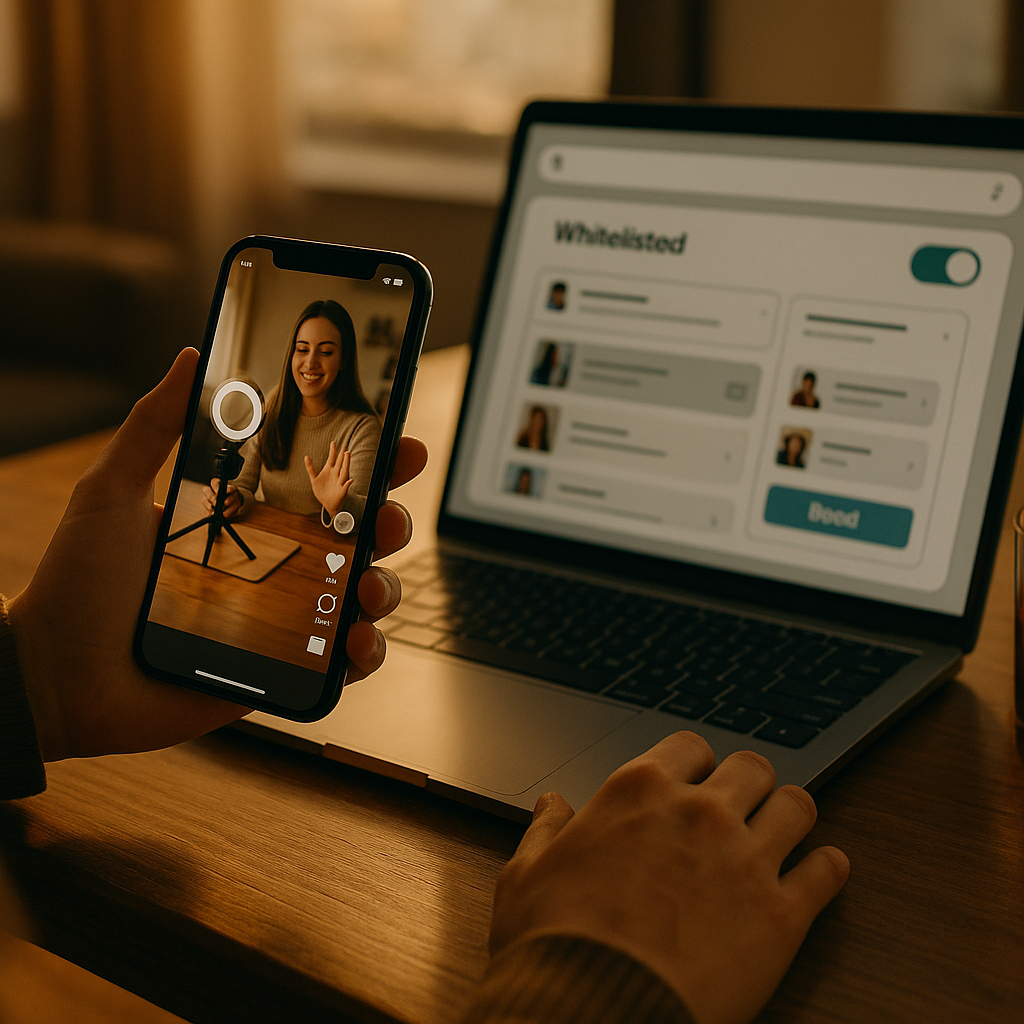Influencer whitelisting and authorization has become a cornerstone of modern digital marketing in 2025, enabling brands to amplify content and reach targeted audiences with precision. Successfully streamlining these processes requires the right tools to ensure efficiency, transparency, and compliance. But how do you choose the best solution—and what features truly matter?
The Importance of Influencer Whitelisting in Modern Campaigns
Influencer whitelisting allows brands to run paid ads through creators’ social accounts, boosting credibility, audience targeting, and engagement. In the current digital landscape, influencer whitelisting tools offer much-needed support to manage permissions, maintain brand safety, and ensure creator relationships thrive. Sophisticated platforms can even automate contract management, permissions, and reporting, greatly simplifying workflows for both brands and influencers.
Choosing the Right Influencer Whitelisting Platform
When selecting a whitelisting platform for influencer marketing, prioritize security, usability, and scalability. Ideal tools should allow seamless collaboration and support transparent authorization requests. Look for solutions that provide:
- User-friendly dashboards for tracking campaigns and permissions
- Automated request management for whitelisting and access control
- Compliance checks to ensure campaigns meet privacy laws
- Integration options with social media and ad platforms
- Granular reporting on engagement and ad performance
This approach not only streamlines collaboration but also minimizes the administrative burden for your team.
Top Tools That Simplify Influencer Authorization
Several influencer authorization tools have surged in popularity, each designed to tackle unique challenges in 2025. Trusted platforms provide secure access and clear permission pathways so brands can boost influencer assets compliantly. Popular features include:
- One-click authorization to simplify onboarding for creators
- Automated permission reminders that keep campaigns running smoothly
- Audit logs for full transparency on access and changes
- Integration with contract management for legal efficiency
By using such tools, brands and agencies ensure every partnership remains secure and in line with both platform policy and evolving legal requirements.
Best Practices for Secure and Compliant Influencer Whitelisting
Proper influencer access management is essential for protecting brand integrity and creator trust. Applying strong processes with robust tools ensures both security and legitimacy:
- Request explicit, written consent before accessing creator accounts or assets.
- Use platform-approved authorization flows—never request login details directly.
- Offer clear instructions and support to streamline setup for influencers.
- Set boundaries for ad spend, creative, and audience usage to avoid misunderstandings.
- Regularly review and update permissions as collaborations evolve.
These practices, reinforced by up-to-date tools, foster healthy, long-term influencer partnerships and minimize regulatory risk.
Features to Look for in Leading Influencer Platform Integrations
As influencer campaigns grow in complexity, influencer platform integrations determine campaign efficiency and success. When evaluating tools, focus on features that automate repetitive tasks and provide end-to-end control, such as:
- Direct integration with ad manager platforms (Meta, TikTok, etc.) for faster whitelisting
- Customizable permission levels to suit unique partnership needs
- Automated contract e-signature workflows
- Real-time reporting on authorization status
- Role-based access for multi-user teams
These functionalities enable brands to manage dozens — or hundreds — of influencer partnerships without sacrificing transparency or security.
How AI and Automation Are Transforming Whitelisting Workflows
Artificial intelligence is revolutionizing how brands and agencies manage both whitelisting automation and influencer authorization. In 2025, advanced tools leverage AI to:
- Automate repetitive communications—like reminders and follow-ups
- Predict and flag compliance risks using advanced pattern recognition
- Analyze campaign performance to optimize media spend allocation
- Guide contract negotiation based on historical partnership data
By embracing AI-powered solutions, marketing teams elevate efficiency and unlock deeper insights from their influencer initiatives, staying agile in a fiercely competitive digital market.
Conclusion
In 2025, influencer whitelisting and authorization are easier than ever with the right tools and best practices. Smart platforms automate permissions, streamline compliance, and protect all parties. Invest in user-friendly, integrated tools, and you’ll maximize your influencer campaigns’ reach and ROI while maintaining trust and legal integrity throughout.
FAQs
-
What is influencer whitelisting?
Influencer whitelisting is when a creator grants a brand permission to run paid ads through their social media account, allowing more effective audience targeting and content amplification.
-
How do influencer authorization tools work?
Influencer authorization tools automate the process of requesting, granting, and managing permissions for brands to access and boost influencer assets, ensuring secure, transparent workflows.
-
Are influencer access management tools secure?
Yes, reputable influencer access management tools offer robust encryption, audit trails, and role-based controls to protect both brand and creator data, meeting privacy and compliance standards in 2025.
-
Why should brands use whitelisting platform integrations?
Platform integrations connect directly to ad managers and social accounts, saving time, reducing errors, and providing real-time insights into campaign performance and authorization status.
-
What are the benefits of AI in whitelisting automation?
AI automates communications, enhances compliance monitoring, predicts risk, and delivers actionable insights, leading to faster, safer, and more effective influencer campaign management.
